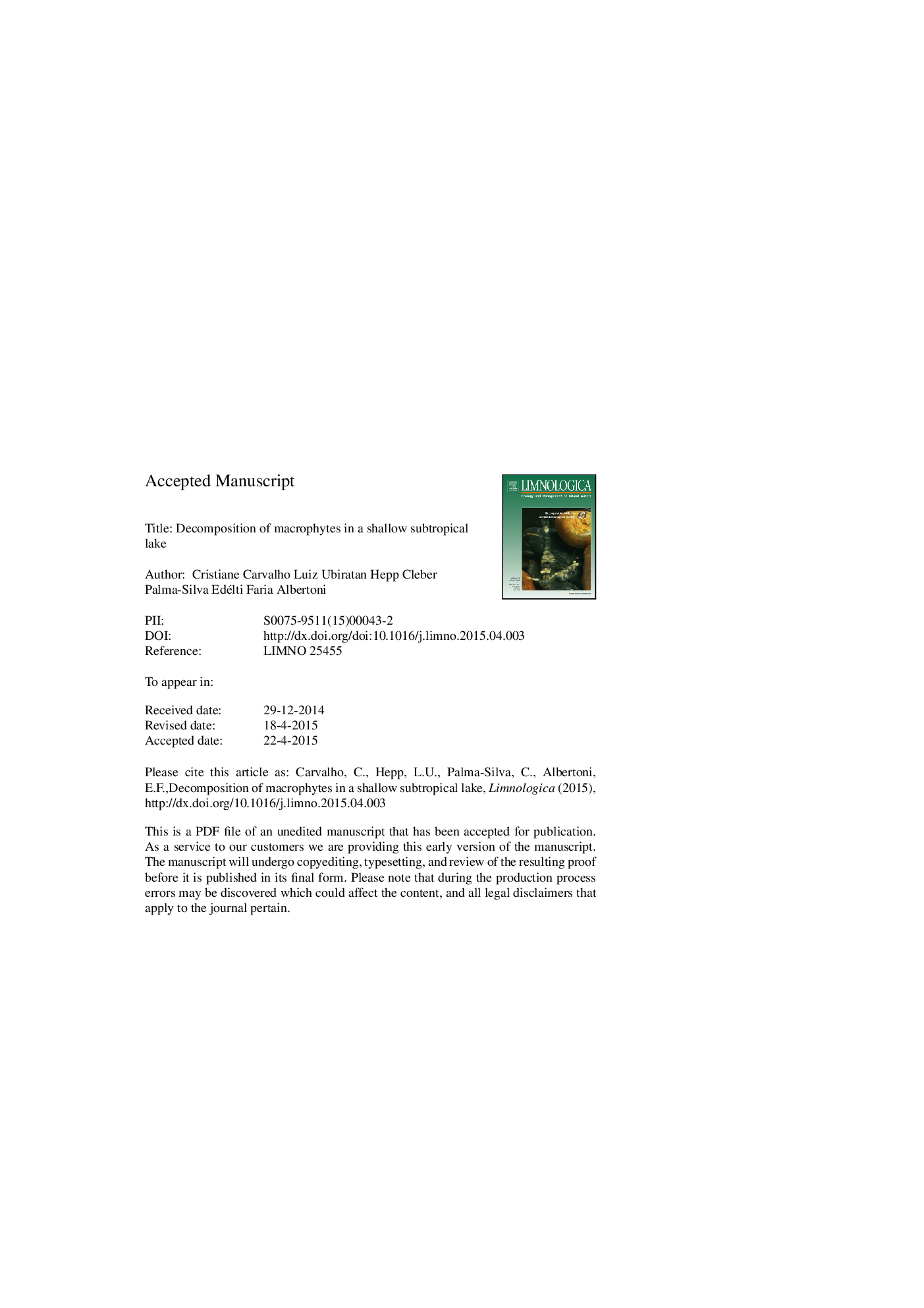| Article ID | Journal | Published Year | Pages | File Type |
|---|---|---|---|---|
| 6305549 | Limnologica - Ecology and Management of Inland Waters | 2015 | 33 Pages |
Abstract
Submerged macrophyte detritus is a major component of the organic matter entering shallow lakes. Plant litter decomposition is a complex process that is mediated by microorganisms and some invertebrates. However, the role that aquatic organisms play in the decomposition of macrophytes in shallow subtropical lakes is unclear. This study compared the decomposition rates of Potamogeton pectinatus and Chara zeylanica in a shallow lake (southern Brazil) and assessed the fungal biomass and the macroinvertebrate community associated with the detritus. Aliquots of both species were incubated in litter bags and placed in the lake. After 1, 7, 20, 40, 60, and 80 days of incubation, one set of litter bags was removed from the lake. In a laboratory, plant material was washed for the determination of decomposition rates, chemical characterisation, and quantification of microorganisms and invertebrates. After 80 days of incubation, there was no C. zeylanica detritus, with a decomposition that was four times faster than that of P. pectinatus. The chemical composition was also different between the two detritus, with P. pectinatus showing a higher concentration of nitrogen, phosphorus, organic matter, polyphenols, and carbon. The fungal biomass was similar between the two species. In total, 7502 invertebrates belonging to 27 taxa were sampled in this study. The composition and abundance of invertebrates was different between the two species. In conclusion, the chemical structure of the macrophyte species studied was important for the microorganisms' and invertebrates' colonisation. In addition, leaching had an important function in the initial degradation process.
Keywords
Related Topics
Life Sciences
Agricultural and Biological Sciences
Aquatic Science
Authors
Cristiane Carvalho, Luiz Ubiratan Hepp, Cleber Palma-Silva, Edélti Faria Albertoni,
